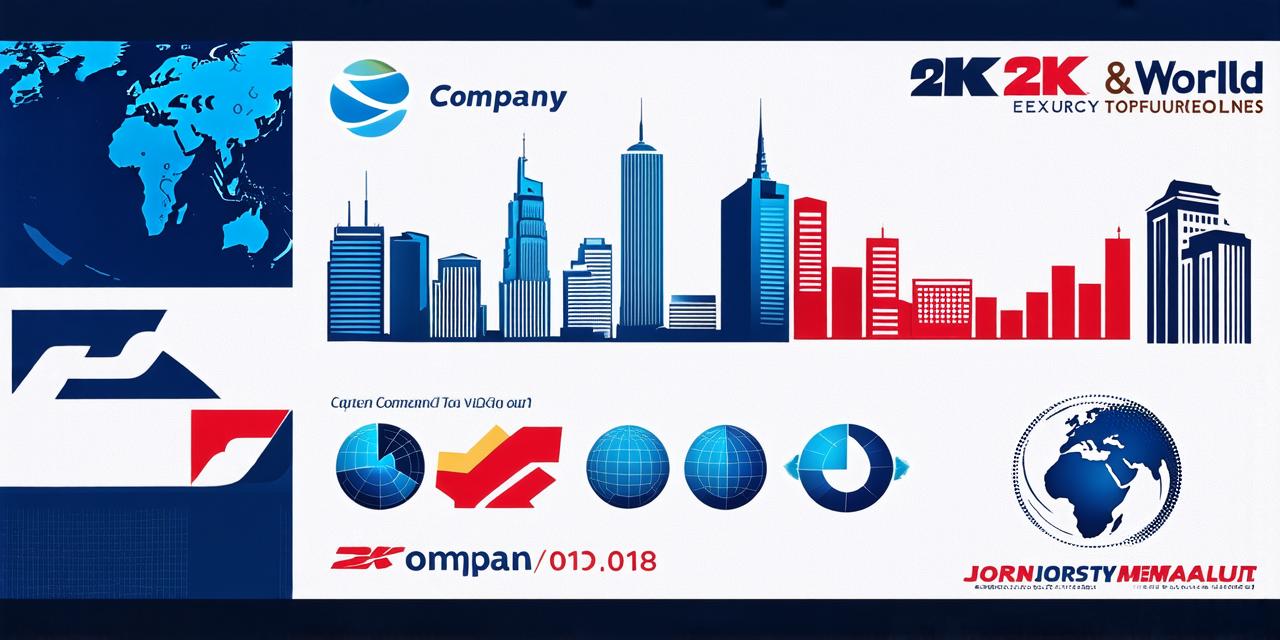The world of business is vast and constantly evolving. Companies come and go, some rise to the top while others falter. In this article, we will explore the largest company in the world based on revenue, market capitalization, and other factors that contribute to its success. We will also analyze the key strategies and factors that have contributed to their dominance, as well as some of the challenges they face.
The Largest Company in the World: Walmart (US)
Walmart is a multinational retail corporation headquartered in the United States. It was founded in 1960 by Sam Walton and has since expanded to become the world’s largest company by revenue, with over $500 billion in annual sales as of 2021. Walmart operates under several brands, including Sam’s Club, Jet.com, and Bonobos.
Walmart’s success can be attributed to several key factors. Firstly, their focus on low prices has been a major driver of their growth. They have managed to maintain lower prices than their competitors while still offering a wide range of products, which has attracted price-conscious consumers. Secondly, Walmart has been able to expand its operations globally, with stores in over 20 countries. This has allowed them to tap into new markets and increase their revenue.
Another factor that has contributed to Walmart’s success is their focus on technology. They have invested heavily in e-commerce platforms and online retailing, which has helped them stay ahead of the competition. Additionally, Walmart has implemented several innovative technologies in their stores, such as self-checkout kiosks and smart shelves, which have improved efficiency and customer experience.
Despite its success, Walmart faces several challenges. One major challenge is the increasing competition from online retailers such as Amazon. Walmart has had to adapt to this shift by investing more heavily in e-commerce and improving their online presence.
Another challenge is the ongoing COVID-19 pandemic, which has disrupted global supply chains and caused uncertainty in the retail industry.
The Second Largest Company in the World: Berkshire Hathaway (US)
Berkshire Hathaway is a multinational conglomerate holding company headquartered in the United States. It was founded in 1953 by Warren Buffet and has since grown to become the second-largest company in the world based on market capitalization, with over $400 billion as of 2021.
Berkshire Hathaway’s success can be attributed to several key factors. Firstly, their focus on long-term investing and value creation has been a major driver of their growth. They have invested in several companies across various industries, including insurance, energy, and retail, which has allowed them to diversify their revenue streams and reduce their risk. Secondly, Berkshire Hathaway’s CEO, Warren Buffet, is known for his long-term vision and strategic thinking, which has helped the company maintain its dominance in the conglomerate industry.
however, Berkshire Hathaway also faces several challenges. One major challenge is the ongoing COVID-19 pandemic, which has disrupted global supply chains and caused uncertainty in the insurance and energy industries. Another challenge is the increasing competition from other conglomerates that are expanding their operations in the United States.
The Third Largest Company in the World: State Grid Corporation of China (China)
State Grid Corporation of China is a multinational utility company headquartered in China. It was founded in 1998 and has since become the third-largest company in the world based on revenue, with over $400 billion in annual sales as of 2021. State Grid operates in various industries, including power generation, transmission, and distribution.
State Grid’s success can be attributed to several key factors. Firstly, their focus on investment in infrastructure and energy has allowed them to tap into new markets and increase their revenue. Secondly, the Chinese government has invested heavily in the utility sector, which has provided State Grid with a steady stream of funding and support.
However, State Grid also faces several challenges. One major challenge is the ongoing COVID-19 pandemic, which has disrupted global supply chains and caused uncertainty in the energy industry. Another challenge is the increasing competition from other utility companies expanding their operations in China, as well as the regulatory environment in China, which can be unpredictable and often changes rapidly.
Conclusion:
In conclusion, the largest company in the world based on revenue is Walmart, a multinational retail corporation headquartered in the United States. Their focus on low prices, global expansion, and technology has allowed them to maintain their dominance in the retail industry. However, they face several challenges such as increasing competition from online retailers and disruptions caused by the ongoing COVID-19 pandemic.
The second-largest company in the world based on market capitalization is Berkshire Hathaway, a multinational conglomerate holding company headquartered in the United States. Their focus on long-term investing and value creation has allowed them to diversify their revenue streams and reduce their risk. However, they face challenges such as disruptions caused by the ongoing COVID-19 pandemic and increasing competition from other conglomerates expanding globally.
The third-largest company in the world based on revenue is State Grid Corporation of China, a multinational utility company headquartered in China. Their focus on investment in infrastructure and energy has allowed them to tap into new markets and increase their revenue. However, they face challenges such as disruptions caused by the ongoing COVID-19 pandemic and increasing competition from other utility companies expanding in China.

Overall, these three companies have maintained their dominance in their respective industries through a combination of strategic investments, strong leadership teams, and adaptability to changing market conditions. However, they also face several challenges that will require them to continue innovating and adapting in order to maintain their positions as some of the largest companies in the world.


